ACTIVITY
Global water perspectives
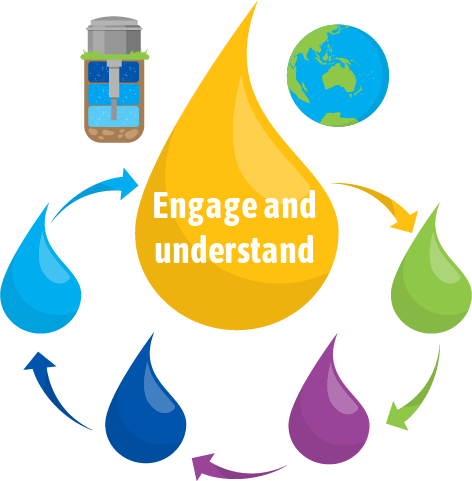
Curriculum links : Levels 3- 4
Science: Planet Earth and beyond: Earth systems
Nature of Science: Communicating in science
English: Listening, Reading and Viewing
Social Sciences: social studies
Activity Idea
In this activity, students learn about water availability and water stress around the world. They consider water availability, use and supply in different countries and reflect on New Zealand’s situation.
By the end of this activity, students should be able to:
- contrast water use and availability around the world
- escribe New Zealand’s water resources, use and supply compared to other countries.
FOR TEACHERS
Introduction
We all use water, but where we come from influences how we use this resource and taonga. New Zealand's population is relatively small compared to other countries, and most years, we are fortunate to have reliable water sources and rainfall – although there are regional and seasonal variations and climate change may affect rainfall patterns. We use more water per person than most other countries in the world, and many New Zealanders take water for granted.
Many people around the world do not have access to safe drinking water or a public water supply of piped water to homes. Unsafe, untreated water can make people sick. In some countries, access to water can limit children’s ability to attend school.
Physically, there may be a shortage of freshwater in some countries and environments – for example, in desert climates. Water stress can also result from a lack of infrastructure and water treatment services.
UNESCO Sustainable Development Goals (SDGs)
UNESCO has developed 17 Sustainable Development Goals (SDGs) to be a “blueprint to achieve a better and more sustainable future for all”. SDG 6 Clean water and sanitation works to ensure availability and sustainable management of water and sanitation for all.
In 2020, 75% of the world’s population had access to safe drinking water, while 25% still did not have safe drinking water.
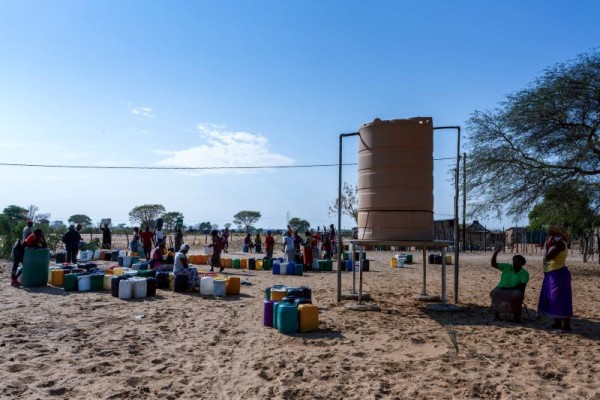
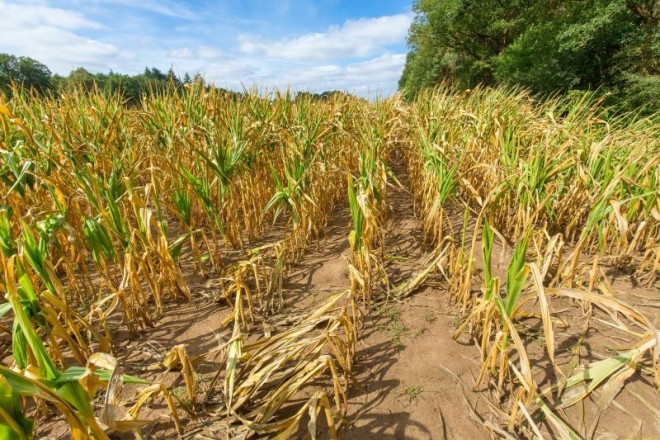
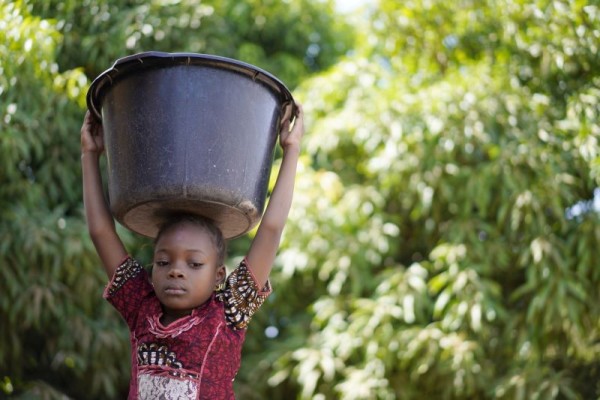
Healthy water for everyone
1. View the UNICEF video Water doesn’t come from a tap. This video shows the reality of life and water supply for children in Ethiopia, where Aysha spends much of her day collecting water for her family.
2. Discuss the challenges for people around the world having access to clean freshwater. What factors influence access to water and water challenges? (Weather, climate, water sources, politics, infrastructure, resources.)
Comparing water use and supply in different countries
|
Summary of water challenges and supply in different countries |
||||
|---|---|---|---|---|
|
Country |
Children who experience repeated water shortages and scarcity |
Major water challenges |
People with access to safe drinking water |
Water stress (withdrawal of water as a percentage of total water resources) |
|
Kenya |
92% |
Climate change, medium drought risk, frequent water scarcity, lack of water treatment infrastructure. |
63% |
(33%) Medium to high |
|
China |
7% |
Climate change, medium to high risk of droughts and floods, water scarcity in some cities, pollution issues. |
95.5% |
(43%) High |
|
India |
25% |
Climate change, medium drought risk, water scarcity, lack of water treatment, water contamination. |
94% |
(66%) High |
|
Australia |
0% |
Climate change, medium drought risk, some water scarcity. |
100% |
(6%) Low |
|
New Zealand |
0% |
Climate change, low to medium drought risk, very little water scarcity. |
100% |
(8%) Low |
3. Discuss water supply and abundance in Aotearoa New Zealand. Is water availability, supply and use the same in all countries around the world? Why is this?
4. Use the infographic texts in the student handout to contrast water challenges, water use, abundance and supply in Aotearoa New Zealand, Kenya, India and China.
5. Students can read texts, then compare the situation in two of the countries. They can then complete the Comparing water access and challenges in the student handout.
Video competition
6. Challenge students to create their own videos about water access and challenges for them and their families now or in the past. If they have lived in other countries, it would be very interesting for other students to hear about their experiences with water challenges outside New Zealand.
7. If students want to share their videos with the Smart Water team and other schools, email your video link to: hello@smartwater.org.nz.
Questions for deeper thinking
- Which countries experience the most water shortages, scarcity and stress?
- What do the countries with the greatest water challenges have in common?
- How does Aotearoa New Zealand compare against other countries for access to safe drinking water and water challenges?
- What can we do to contribute to reaching the goal of all people having access to safe drinking water by 2030?
Extension ideas
Consider the role of climate change and its impact on freshwater supplies. The following resources provide background information:
- What is climate change? – article
- Ko e ha ‘a e feliuliuaki ‘a e ‘ea?– article (Faka-Tonga)
- Disappearing glaciers – article
- Climate change challenging conversations – activity
- Ko e feliuliuaki ‘a e ‘ea – ko e talanoa fakakoloa – activity (Faka-Tonga)
The following links are to the sources of statistics and information for activity and water stories. Encourage students to use the resources and others, to further investigate water issues around the globe:
- Reimagining WASH: Water security for all – UNICEF
- Global drought risk and water stress – DG ECHO Daily Map – United Nations Office for the Coordination of Humanitarian Affairs
- Aquastat – FAO (Food and Agriculture Organization of the United Nations)
- Water for food, water for life – International Water Management Institute
- Beneath the surface: The state of India’s water 2019 – Water Aid India
Everyone can increase their water use efficiency – find out how in Being smart with water.
This activity is part of a suite of resources that support Smart Water – a context for learning, which provides students and teachers with opportunities to connect with water and learn more about drinking water in the Waikato region. The science and mātauranga concepts that underpin Smart Water are transferable to other locations in Aotearoa New Zealand. Smart Water is a partnership between Hamilton City Council, Waipā District Council and Waitomo District Council. It aims to foster a greater understanding and appreciation of water from source to tap and to support schools, organisations and communities to use water sustainably.
For students
Tai’s water story
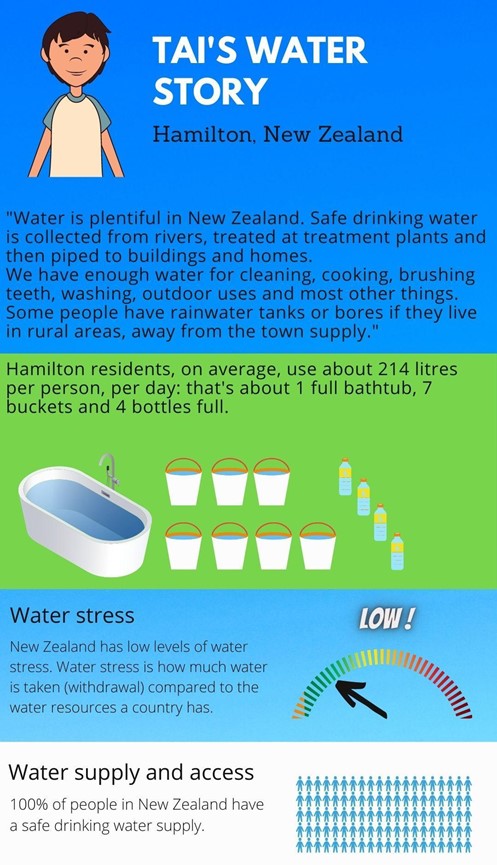
Makena’s water story
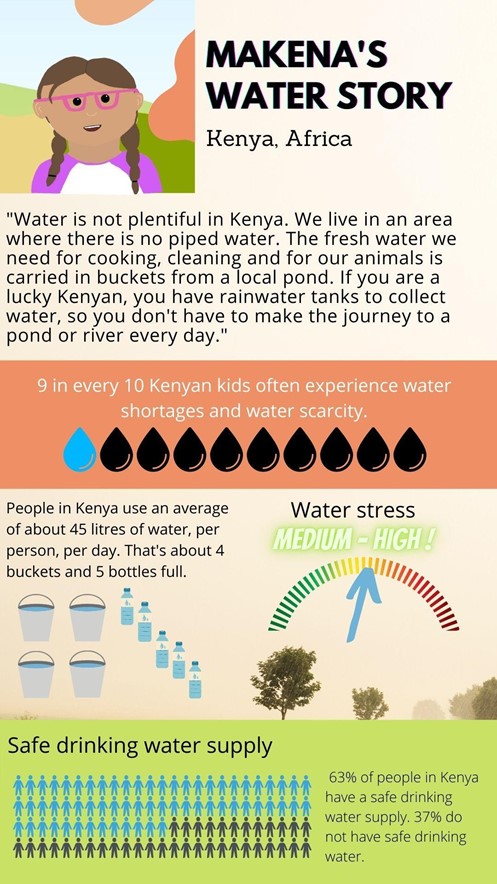
May’s water story
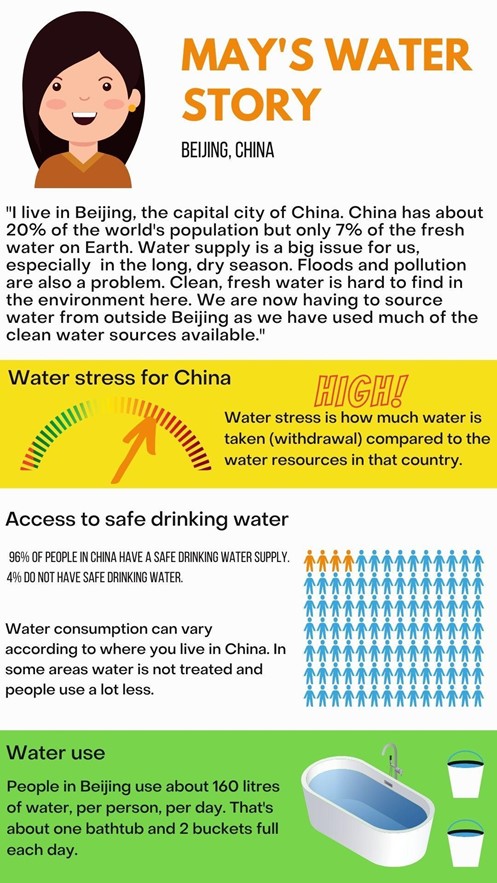
Chandran’s water story
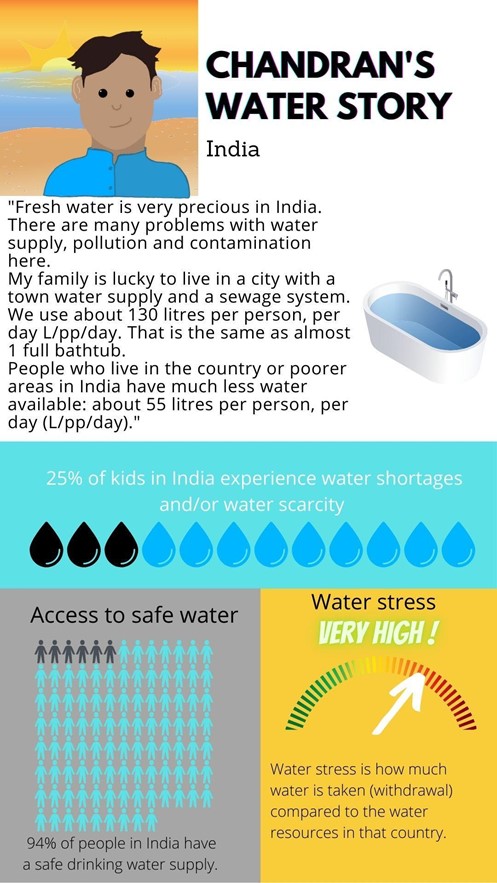
Comparing water access and challenges
Read two water stories from different countries. Use the table 'Comparing water access and challenges' to fill in the names of the countries you are comparing in the top row of the table. Cut out the water access and challenges statements below or make your own in the bottom row and then place them in the appropriate similarities/ differences columns in the table.
ADDITIONAL RESOURCES
Activities
- Comparing water access and challenges
- Summary of water challenges and supply in different countries
- Climate change challenging conversations
- Ko e feliuliuaki ‘a e ‘ea – ko e talanoa fakakoloa
- Being smart with water
Articles
- What is climate change - SLH
- Ko e ha ‘a e feliuliuaki ‘a e ‘ea?
- Disappearing glaciers
- Reimagining Water WASH: Water Security for all
- Water for food, water for life
- Beneath the surface - The state of India's water 2019
Media
Resources
- Tai's water story
- Makena's water story
- May's water story
- Chandran's water story
- Smart Water - A context for learning